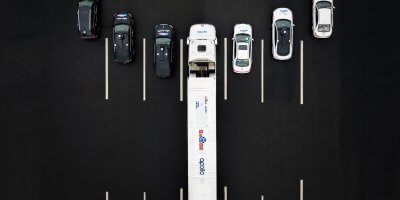
AI and big data can provide smart city solutions based on data on personal behavior and lifestyle choices. Source: AFP
AI and big data’s roles in powering future smart cities
TOMORROW’S smart cities will be seamless. Instant information about health services, transit options, safety alerts, and community news will be at our fingertips.
Smart city spaces are only smart because of how artificial intelligence (AI) and big data technology are used purposefully.
As the world moves into more intelligent spaces, we will need deeper integration between technology and the real economy.
Yesterday, JD.com announced its new big data-powered service that gives social credit scores to individuals, businesses, and potential investors.
The e-commerce company’s new service enables Chinese local governments to incorporate greater use of technology into its operations.
There are infinite possibilities for how AI and big data can be used in smart city spaces. Though, here are three that local governments should have on their digital transformation agenda.
#1 | To build social credit databases
Through gathering, sorting, and analyzing the data of individuals and businesses, AI technology can evaluate an entity’s credibility.
This will help the society promote integrity and trustworthiness at large, so that individuals, businesses, and investors all feel safe.
For example, banks can assess loan applications more efficiently and more accurately based on a data-driven smart system. This will help business operations run more seamlessly.
#2 | To power the traffic infrastructure
An AI and a big data-powered system can also capture data on personal behavior and lifestyle choices.
Adding in the mix of the Internet of Things (IoT) technology, solutions like smart traffic infrastructure will be made possible.
In this case, big data can intelligently inform commuters the most efficient route to take as well as parking availability. For business users, productivity hours can then be repurposed.
#3 | To provide smart transportation services
One of the biggest transportation disruptions is ride-hailing mobile apps. The apps connect drivers and users in a marketplace that is right at their fingertips, making mobility seamless.
Though, surge pricing is a nightmare. Surge pricing occurs when the equilibrium price is shifted due to a sudden increase in demand. Though, AI and big data can resolve this.
With data analytics, the app companies can tell which time windows are the most congested. The insight will warrant an increase in the supply of drivers so that mobility remains positive.
AI and big data are not mere behind-the-scenes tools.
Tomorrow’s smart cities will be powered by technology to deliver to us intelligent social credit systems and smart city solutions.
With a strong foundation of digital integration, individuals and businesses will be able to make better decisions. In short, we will have a better quality of life in tomorrow’s smart city spaces.
READ MORE
- Ethical AI: The renewed importance of safeguarding data and customer privacy in Generative AI applications
- How Japan balances AI-driven opportunities with cybersecurity needs
- Deploying SASE: Benchmarking your approach
- Insurance everywhere all at once: the digital transformation of the APAC insurance industry
- Google parent Alphabet eyes HubSpot: A potential acquisition shaping the future of CRM






